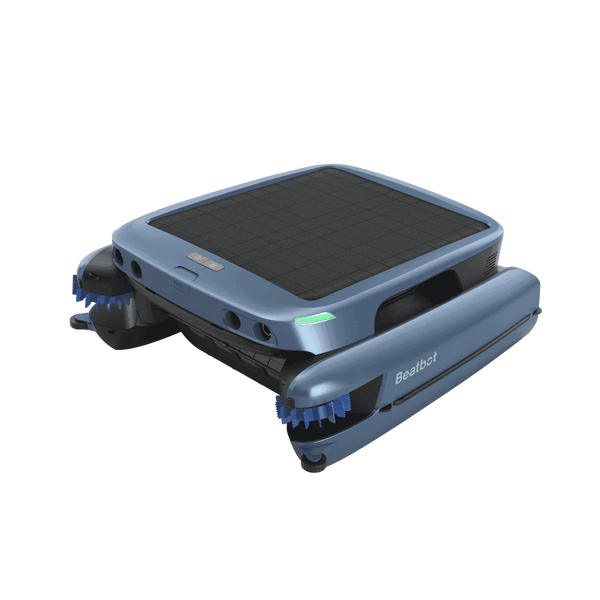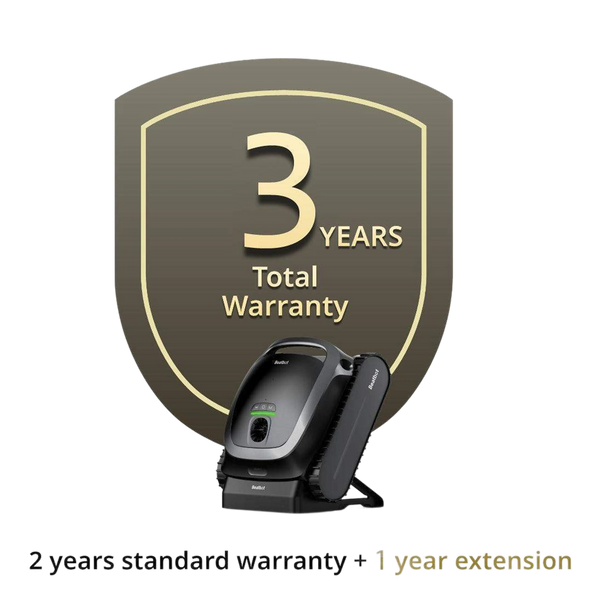Different Types of Pool Chemicals With Storage And Safety Tips
2024-02-09
Many pool chemicals have different features, and storing them safely is essential. Chemicals should be kept in their original containers with tightly sealed lids to prevent contamination and reduce the risk of accidental mixing, which can be dangerous. It's also important to store different types of chemicals separately, particularly oxidizers and acids, to avoid chemical reactions. Always follow manufacturer instructions and local regulations regarding safety tips.
Table of contents
Sanitizers
1. Chlorine
- Features: The most widely used pool sanitizer, available in tablets, granules, and liquid form. It kills bacteria and algae and oxidizes other contaminants.
- Storage Tips:
Temperature: Ideally, store below 75°F (24°C) to prevent degradation.
Ventilation: A well-ventilated area reduces the risk of chlorine gas accumulation if a leak occurs.
Sunlight: Store away from sunlight as UV rays can break down chlorine.
Moisture: Ensure the area is dry; moisture can activate chlorine, leading to hazardous conditions.
Separation: Avoid dangerous reactions by keeping chlorine away from combustibles, acids, and metals.
Safety Tips: Wear gloves and eye protection. Avoid inhaling fumes and ensure good ventilation. Dissolve granular or tablet chlorine in a bucket of water (if manufacturer's instructions permit) before adding it to the pool to ensure even distribution.

2. Bromine
- Features: An alternative to chlorine, especially effective in hot water environments like spas. It's less harsh on the skin and eyes but more expensive.
- Storage Tips:Similar to chlorine in many respects, but given its slightly different chemical nature, ensure it is strictly kept away from direct sunlight and in a dry location to maintain its integrity.
- Safety Tips: Similar to chlorine, use gloves and goggles. Distribute evenly across the water surface.
3. Mineral Systems (Silver and Copper)
Use alongside chlorine or bromine, which can reduce the amount of traditional sanitizers.
pH Balancers (Acids and Bases)
1. pH Increasers (Soda Ash)
Raise the pH level when it's too low.
2. pH Reducers (Muriatic Acid)
Lower the pH level when it's too high.
- Storage Tips:
Separation: Acids should be stored away from bases to prevent neutralization or hazardous reactions. A spill containment strategy is also advisable.
Corrosion: Use corrosion-resistant containers to prevent leaks.
Ventilation: Both acids and bases can emit fumes, especially in hot conditions, necessitating good ventilation.
- Safety Tips: Handle with extreme care, wearing protective gear. Add acid to water, not the other way around, to prevent chemical splashes. Introduce pH balancers slowly into the pool, preferably in areas of high water circulation, to avoid localized pH fluctuations.
Calcium Hardness Increasers
- Features Calcium hardness is important to prevent plaster damage and water cloudiness. Use calcium chloride to increase water hardness if levels are too low.
- Storage Tips:
Like many pool chemicals, they should be kept dry to prevent clumping or unintended reactions. Store away from acidic chemicals to avoid hazardous reactions or the release of chlorine gas.
- Safety Tips: Use protective wear to avoid inhalation and contact with skin, as it can irritate. Pre-dissolve in water to avoid cloudiness in the pool, and add slowly to prevent scaling.
Algaecides
- Features Algaecides prevent algae growth. They can be used as a preventative measure or to kill existing algae. There are various types, including copper-based and quaternary ammonia algaecides.
- Storage Tips:
Avoid storing algaecides near or with oxidizers like chlorine or shock treatments, as reactions could occur. Ensure that containers are leak-proof to avoid spillage or contamination.
- Safety Tips: Wear protective clothing as algaecides can be irritants. Follow label directions for dosage to avoid over-treatment. Apply algaecides according to the manufacturer's guidelines, ensuring thorough mixing and distribution throughout the pool.
Shock Treatments
- Features Shocking the pool refers to adding a large dose of oxidizing chemicals (usually chlorine) to break down organic contaminants, chloramines, and bacteria. Regular shocking keeps the water clear and prevents the "chlorine smell" associated with chloramines.
- Storage Tips:
Given their high oxidizing potential, these chemicals should be stored away from all other substances to prevent accidental reactions. Ensure the storage area is completely dry to avoid premature activation of the shock treatment, which can be dangerous.
- Safety Tips: Never mix shock treatments with any other chemical. Use gloves and goggles, and avoid windy conditions when adding to the pool to prevent blowback. Pre-dissolve shock in a bucket of water (if the manufacturer recommends), and add to the pool during the evening to avoid UV degradation.
Clarifiers and Flocculants
- Features: These chemicals are used to clear cloudy water. Clarifiers coagulate particles so they can be filtered out, while flocculants gather particles into larger clumps that sink to the bottom for vacuuming.
- Storage Tips:
These chemicals must be kept in airtight containers to prevent them from hardening or losing efficacy due to moisture. Avoid storing near extreme pH substances (strong acids or bases) to maintain stability.
-
Safety Tips: As with other chemicals, use personal protective equipment to protect skin and eyes. Follow the manufacturer's directions on dosage and add directly to the pool water. For flocculants, vacuum the settled particles after treatment.

Stain and Scale Preventers
- Features: These chemicals help prevent metal stains and scale formation by sequestering minerals in the water. They are especially important in areas with hard water.
- Storage Tips:
These should be stored separately from other chemicals, especially those designed to sequester (like metals), to avoid nullifying their effect. A cool, dry, and dark environment is ideal to prevent the breakdown of active ingredients.
- Safety Tips: Handle with gloves and avoid contact with skin. Dilute according to the instructions before evenly distributing around the pool perimeter.
FAQs About Pool Chemical Storage
How do I know if my pool chemicals have gone bad?
Signs that pool chemicals have degraded include appearance, texture, or smell changes.
If a chemical looks caked, discolored, or has an unusual odor, it might have been exposed to moisture or contaminated.
Always check expiration dates and inspect containers regularly for signs of damage or leaks.
Can I dispose of old pool chemicals in the trash or down the drain?
Never dispose of pool chemicals in the trash or down the drain, as they pose serious environmental and health risks.
Contact your local waste management or special disposal services for advice on the correct disposal methods for outdated or surplus pool chemicals.
Are there any specific regulations for storing pool chemicals?
Regulations for storing pool chemicals in different locations can be greatly different, so it's crucial to check with local authorities or environmental agencies for specific guidelines.
Generally, standards and regulations dictate how and where chemicals should be stored to prevent accidents and ecological harm. Carefully review the rules before storing the pool chemicals.
Is It Safe to Store Leftover Pool Chemicals Inside a Pool Cleaner?
No, it is not safe to store leftover pool chemicals inside a robotic pool cleaner. Never do that! Chemicals should be kept in their original containers in a cool, dry area away from sunlight and incompatible substances.
Storing chemicals inside a pool cleaner can lead to spills, reduced effectiveness of the chemicals, and dangerous reactions. Proper storage is crucial to maintain chemical integrity and ensure safety. Always follow the manufacturer’s storage guidelines or the above mentioned tips.
Why is it Important Not to Stack Pool Chemical Containers?
When containers are stacked directly on top of one another, they become unstable. This increases the likelihood that they will tip over, leading to spills. Spilled chemicals can create hazardous conditions and lead to costly cleanups.Different pool chemicals may not be compatible with each other. If a spill occurs due to toppled containers, incompatible chemicals can mix, possibly causing dangerous reactions. Such reactions can produce harmful gases or heat, posing a serious safety risk to anyone nearby.
How Long Can Pool Chemicals Be Stored?
Pool chemicals generally have a shelf life of about one year. Their effectiveness depends heavily on how they're stored. To maximize shelf life, ensure your storage area is cool, dry, and well-ventilated.
Key Storage Tips:
Inspect Annually : At the end of each swimming season, go through your pool chemical supplies. Discard anything that's more than a year old to ensure you're using the most effective products.
Avoid Mixing : Never mix old and new chemicals, even if they appear to be the same. Mixing can lead to dangerous reactions or reduce the effectiveness of the chemicals.
By setting aside time each year to go through these steps, you'll be prepared to enjoy a cleaner, safer pool when swimming season returns. Always prioritize safety and quality when handling and storing pool chemicals.
Why is Security Important for Pool Chemical Storage?
One of the most pressing reasons for secure storage is to protect young children and pets. Their natural curiosity can lead to dangerous situations if these chemicals are left within easy reach. It’s crucial to place these substances in locations where they can't be accessed, such as on high shelves without nearby climbable objects, or better yet, in lockable cabinets or storage sheds. This will help eliminate the potential for accidental exposure or ingestion.
Storing chemicals securely also reduces the chance of accidental spills. Chemicals stored overhead can become hazardous if they fall and spill. Conversely, placing them too low without proper locking mechanisms increases the risk of children and pets encountering them. Ideally, chemicals should be stored at a height that minimizes these risks, neither too high nor at ground level, and should always be properly secured.
Relative Blogs
About the author



















